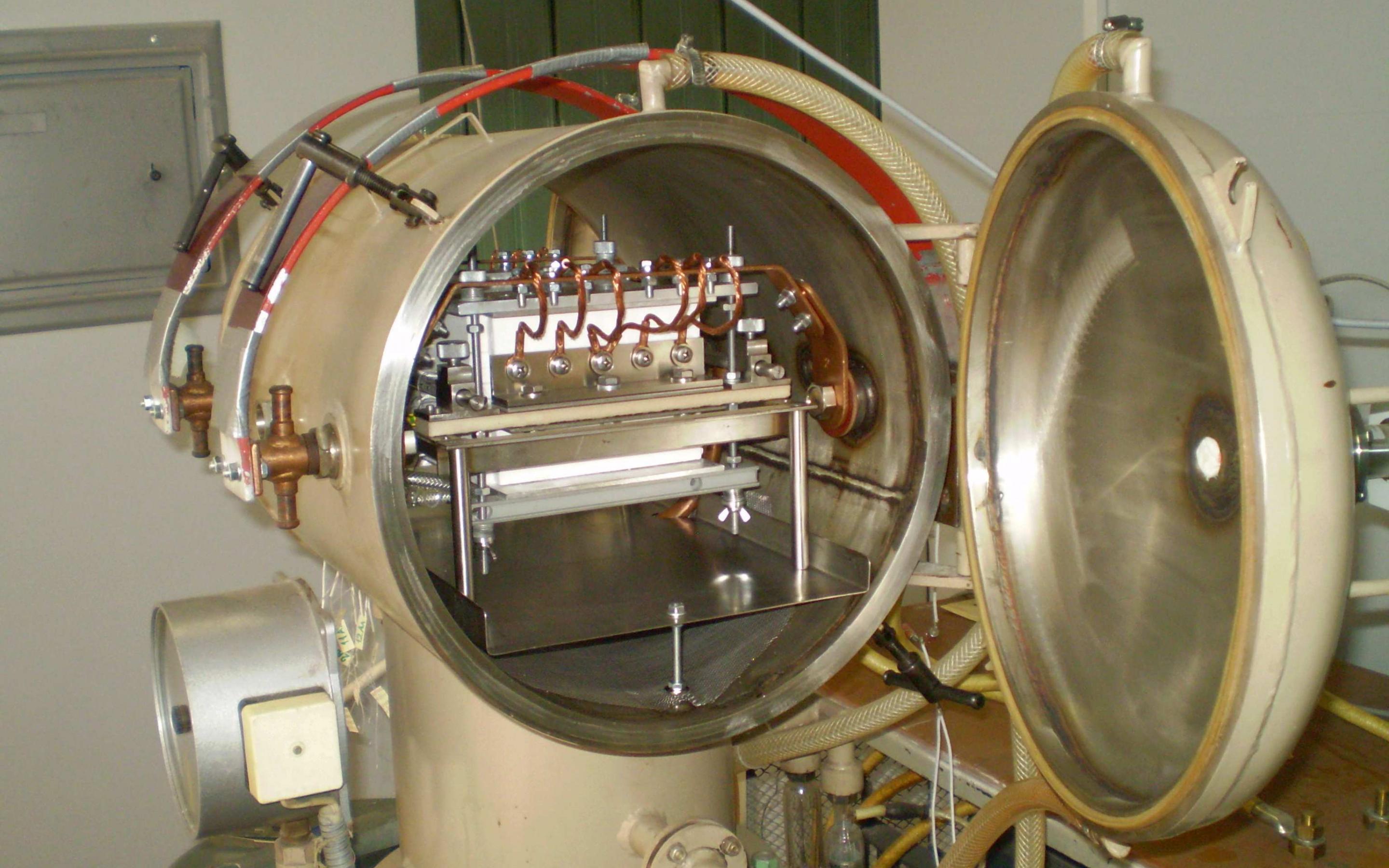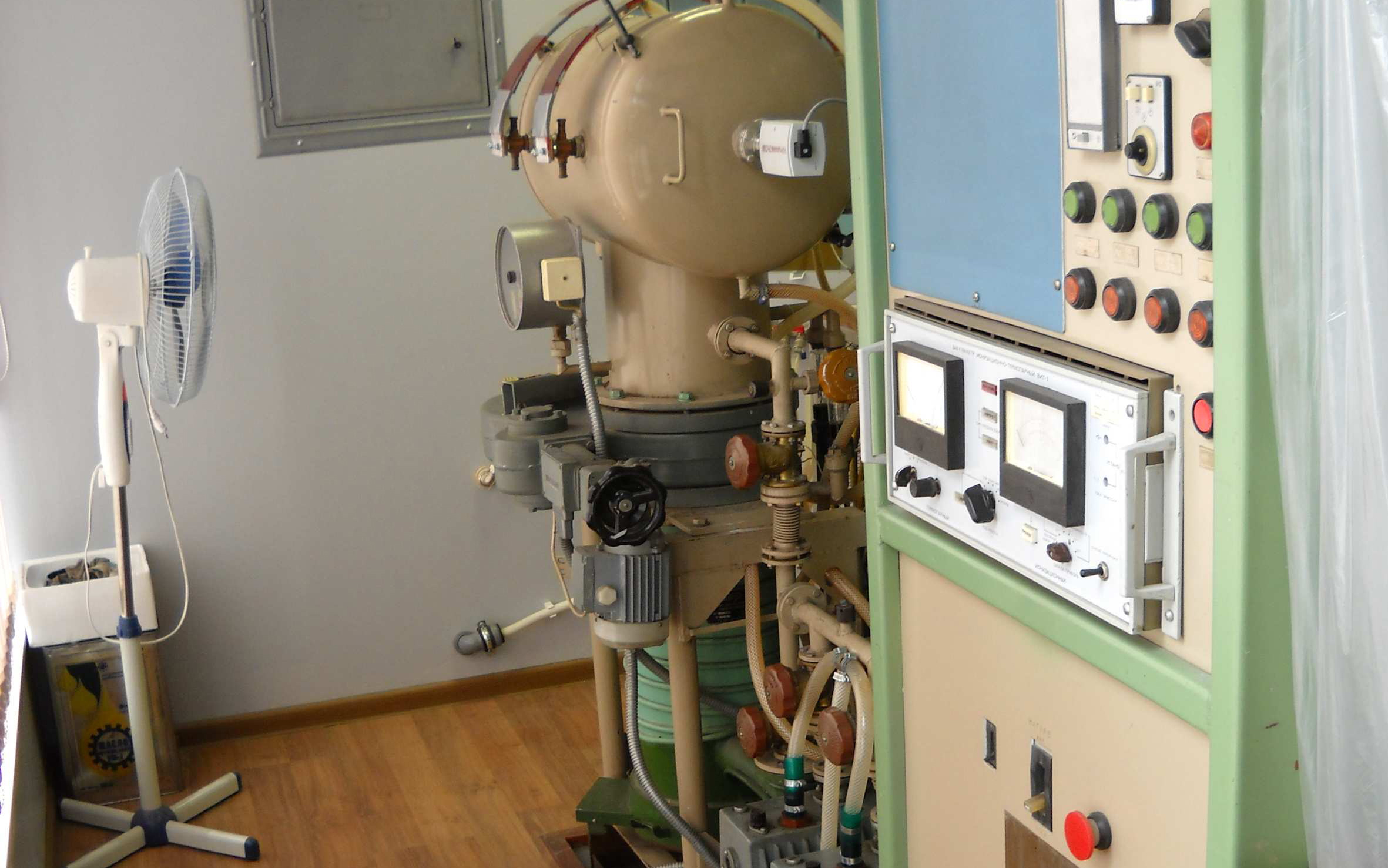Aerospace perspective: MAI experts study glassy carbon

Further development of a whole row of industries is currently impossible without the introduction of a number ofseveral new prospective materials: durable, resistant to high temperatures and other stress factors, light-weighted, and economically efficient. Scientists pin their hopes on the materials based on nano- and carbon microstructures, such as: fullerenes, nanotubes, carbon fibers, graphene, glassy carbon. The application scope of such materials is rather broad. They are applied in electronics, nuclear power, metallurgy, chemical industry, medical industry, automobile, aviation, and rocket engineering, and other industries. Although some of the listed groups of materials have been already known for a long time, their potential still requires profound research and is now only beginning to unfold.
Reticulated glassy carbon is one of the abovementioned materials, and it is currently of particular interest to the aerospace industry. Along with the solution of the thermal protection problem, which is traditionally one of the key tasks as far as the development of new spacecraft is concerned, it can also be the structural material and it might be used as the basis for various technical systems, for example, the adaptive systems. The team of scientists from the Moscow Aviation Institute, the Ural Research Institute of Composite Materials, and the Institute of Catalysis named after G.K. Boreskov of the Siberian Branch of the Russian Academy of Sciences and the Obninsk Scientific and Production Enterprise "Technology" named after A.G. Romashin has been working upon the creation and research of the reticulated glassy carbon and other similar materials for several years already, as well as for the expanding of the prospects for their implementation.
As for MAI, the scientific group lead by Oleg Alifanov, the Academician of the Russian Academy of Sciences, Professor, Head of Department 601 "Space Systems and Rocket Engineering" carries out the research here. Valery Cherepanov, Professor of the Department 801 "Physics", heads the work of the group on the study of the high-temperature materials physical properties and the processes occurring in them. In 2018, the research was supported by the a grant from the Russian Science Foundation.
Unique properties of glassy carbon
Glassy carbon is one of the variants of amorphous carbon and it has several modifications. In a high-density form it is used, for example, as the substitutes of platinum rods in metallurgy, and its light-mesh versions (the porosity can reach 96–97%), it is considered to be a very promising material for the creation of spacecraft elements, including those intended for operation under extreme conditions.
The ultraporous reticulated glassy carbon with low density and thermal conductivity has elasticity and at the same time, its mechanical strength is rather high. It is chemically inert and can withstand temperatures up to 3000 degrees Celsius in neutral or oxygen-free environments. The system of open pores of the material may be filled with various substances modifyicating its properties.
"While conducting our work, we pursue the goals of the reticulated glassy carbon properties optimization, as well as the creation of the new materials based on it, - says Valery Cherepanov. - Due to the complexity of the composition and structure of such materials, and their partial transparency to electromagnetic radiation, it is very difficult to describe the physical processes that are happening inside the material, and we are now only on our way to the best final solution of this task."
The success of the research
The scientific group headed by Oleg Alifanov, lists Sergey Budnik, Alexey Mednov, Nikolai Ivanov, Alena Morzhukhina, Andrey Netelev, Margarita Salosina, Dmitry Titov, Viktor Yarotsky, Professor Alexey Nenarokomov. The unique complex for studying the thermophysical properties of materials in extreme conditions was created and is now being developed in the thermal department of the dDepartment 601 as the result of their joint efforts.
"This achievement is significant not only from the point of view of Russian science, but it is also quite important at the international level - emphasizes Valery Cherepanov, - The use of such complexes creates real prospects for the widespread introduction of an effective methodology for inverse identification problems implementation for fundamental and applied scientific research. And, although at present such complexes are unique, research systems similar to them can be productively used for future research, design, development organizations, various technological and test laboratories".
The abovementioned MAI scientific team might be called, without exaggeration, one of the leading in its field. The results of their work are published in top-rated scientific Russian and foreign magazines (High Temperature, Optics, and Spectroscopy, International Journal of Heat and Mass Transfer, Infrared Physics and Technology, ASME Journal of Heat Transfer, Applied Mathematical Modeling, Acta Astronautica, etc.) on a regular basisregularly. Thus, last year the Journal of Engineering Physics and Thermophysics published the an article about the experimental study of the glassy carbon key spectral characteristics and the optical properties of reticulated materials modeling based on these data.
"We managed to develop the production technology of high-density glassy carbon samples, which are identical to the Russian glassy carbon base of mesh materials from the point of view of their physical properties. This is fundamentally important, since glassy carbon is produced via various technologies worldwide, so that the final stage materials might have different physical properties", says Professor Cherepanov.

"As the result of the sample examination, we obtained unique data on the physical properties of the mesh base of the perspective class of Russian composite materials, which we hope to use in modeling and predicting the properties of materials and systems created basing on them."
Huge opportunities
Mathematical materials engineering is a very promising scientific field that is currently actively developing worldwide.
The ability to calculate the properties of prospective materials and systems allows adjust the production technology reasonably, and therefore more efficiently, reduce the development time and cost significantly, - notes Valery Cherepanov - Russian aerospace enterprises are interested in the results of our work. But they are not the only ones. Several years ago, as part of joint work with the European Space Agency (ECA), we studied samples of reticulated glassy carbon RVC ETTI, ULT (USA). The material was supposed to be used for the construction of the a space solar probe in the framework of the European space research project BepiColombo. Our work allowed us to make a certain recommendation for its implementation. As far as I know, the launch of the probe turned out to be successful.
The type of the mathematical models created at MAI is the open type, which means that they are available for further development and various generalizations. The experts of the Moscow Aviation Institute consider the study of the influence of the topology of the model elements, the statistical features of their distributions, cooperative effects in the interaction of material fragments with radiation on the physical properties of materials in general as the most urgent, priority promising tasks."
"This list can go on and on, and on, since it is practically inexhaustible - after solving one problem, we set another one at once, and the process goes on. The deep and comprehensive study of many physical processes occurring in complex materials on the micro- and nanoscale, is now almost at the very initial stage, despite the fact thatalthough they the work is based on different approaches and is carried out by many scientific groups in different directions worldwide. The characteristics of various processes occurring in the volume of complex environments are extremely poorly examined and therefore they are the real “terra incognita”, a vast field for the application of the intellectual abilities and forces of the future researchers", Professor Cherepanov concludes.
Photo: the experimental stand of the dDepartment 601, thermal vacuum chamber with the experimental module